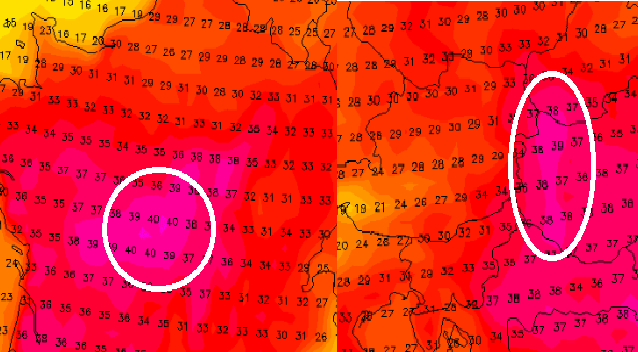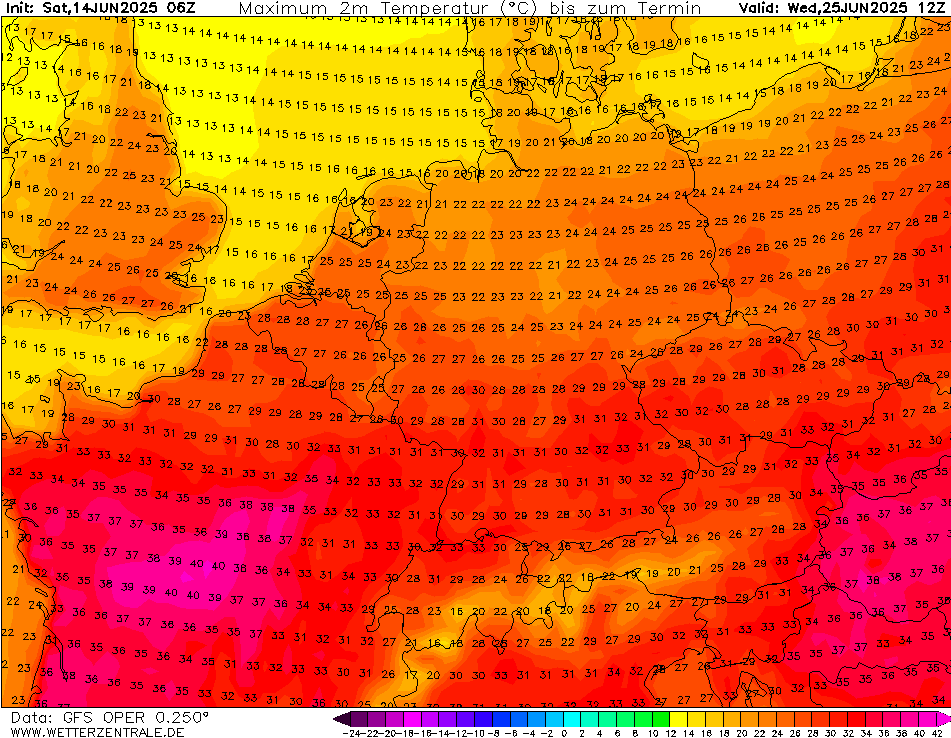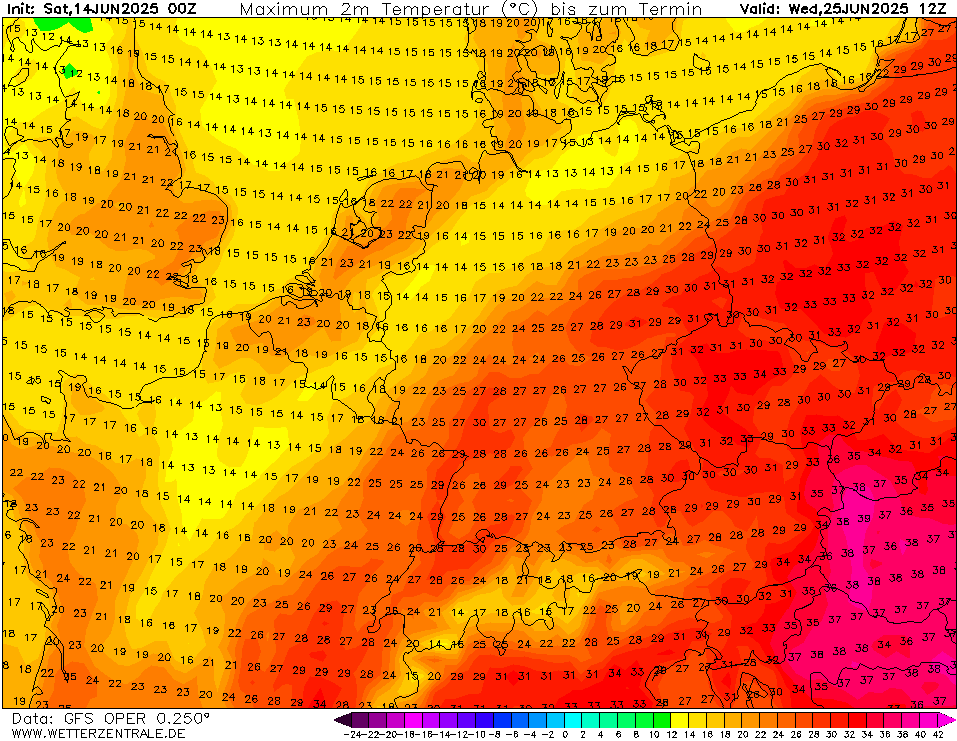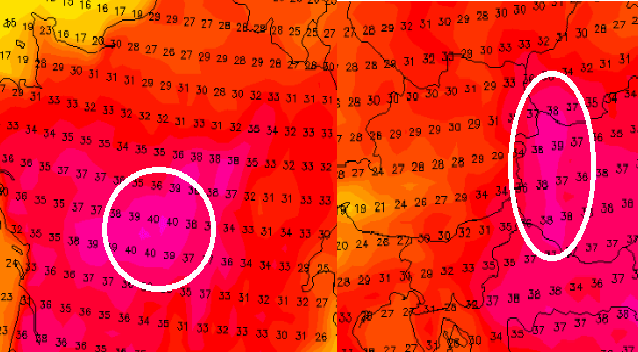
Early-Season Extreme Heat Threatens Central France and Hungary
Meteorological models are sounding the alarm: an intense and potentially record-challenging heatwave may hit Continental Europe around 25 June 2025, with daytime highs potentially reaching or exceeding 40°C. According to the latest GFS (Global Forecast System) forecasts, central regions of France and Hungary appear to be at the epicenter of this early-season heat surge.
🔥 Heatwave Hotspots: Central France and the Carpathian Basin
- Central France is projected to see maximum temperatures in the range of 38°C to 40°C, particularly across inland areas such as the Loire Valley, the Centre-Val de Loire, and parts of eastern Nouvelle-Aquitaine. These values could approach early summer records.
- In Hungary and neighboring areas (including southern Slovakia, eastern Austria, and western Romania), conditions appear equally severe. Forecasts indicate temperatures peaking at 38 to 40°C, especially across lowland areas of the Pannonian Plain.
These areas are traditionally vulnerable to extreme heat when strong upper-level ridging traps warm, dry air for several days—a scenario now developing on forecast maps for the third week of June.
🌀 Meteorological Setup Behind the Heat
- A strong subtropical high-pressure system is forecast to stretch northward from North Africa across the Mediterranean into central Europe, allowing hot Saharan air to surge deep into the continent.
- The Azores High and a blocked Atlantic jet stream will reinforce this ridge, preventing cooler oceanic air from reaching the continent and allowing temperatures to build rapidly over several days.
🌡️ How Rare Is This in June?
Reaching or exceeding 40°C before July is very rare historically in Continental Europe. Such early-season extremes are becoming more frequent, with soil dryness, changing circulation patterns, and stronger high-pressure systems all playing a role in amplifying heat.
⚠️ Risks and Preparedness
- Health: Heatwaves remain one of Europe’s deadliest weather threats. Vulnerable populations should be protected, and hydration campaigns may be needed.
- Agriculture: Heat during sensitive crop stages can reduce yields, particularly for cereals and fruit.
- Power demand: The surge in air conditioning use could stress power grids in urban centers.
- Fire risk: Hot, dry conditions increase the danger of wildfires, especially in grassy and forested areas.



Detail.


























